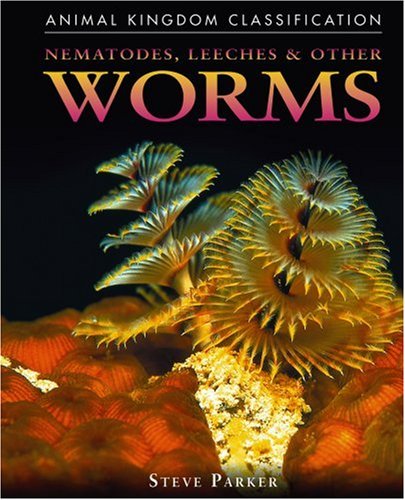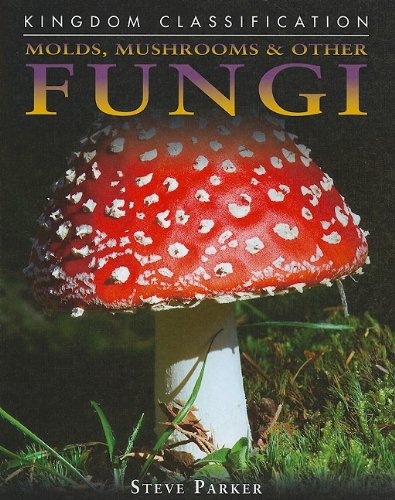-
Bats, Blue Whales, and Other Mammals
Steve Parker
Library Binding (Compass Point Books, Sept. 1, 2005)Describes the physical characteristics of mammals, along with their habitats, behaviors, methods of moving around, feeding habits, and life cycles. Various species are highlighted. Z
Z
-
Dinosaurs
STEVE PARKER
Hardcover (APPLE PRESS, March 15, 1997)None
-
Fizzing Physics: Fantastic Hands-on Activities
Steve Parker
Paperback (QEB Publishing, Sept. 1, 2016)Science Crackers is a great series for all budding scientists wanting to understand the world. With a back-to-basics approach to the core topics, these books investigate science in a clear and concise way. Simple, practical activities will help children understand how science is relevant to their everyday lives. S
S
-
Nematodes, Leeches, and Other Worms
Steve Parker
Library Binding (Compass Point Books, Jan. 1, 2006)Describes the physical characteristics of worms along with their habitats, behaviors, methods of moving around, feeding habits, and life cycles. Z
Z
-
The LCAC Military Hovercraft
Steve Parker
Library Binding (Capstone Press, Sept. 1, 2007)Provides an in-depth look at the LCAC military hovercraft, with detailed cross-section diagrams, photographs, and additional facts and information. U
U
-
Molds, Mushrooms & Other Fungi
Steve Parker
Library Binding (Compass Point Books, July 1, 2009)This book introduces you to the fungi kingdom, from familiar mushrooms to unicellular yeasts. It examines the types of fungi, their reproductive methods, and how they feed. It also looks at modern uses of fungi, as well as how fungi recycle dead organic matter into useful nutrients. Did You Know? There are about 100,000 species of fungi. Some fungi digest their food outside of their bodies. Not counting tree roots, 90 percent of all living matter in forest soil is made up of fungi. Y
Y
-
Sponges, Jellyfish, and Other Simple Animals
Steve Parker
Library Binding (Compass Point Books, Jan. 1, 2006)Describes the physical characteristics of simple animals, along with their habitats, behaviors, methods of moving around, feeding habits, and life cycles. Various species are highlighted including the jellyfish and the sponge. Y
Y
-
Eyewitness: Seashore
Steve Parker
Hardcover (DK Children, June 1, 2000)Discover the fascinating world of the seashore -- its strange and beautiful creatures and their secret lives. Here is an original and exciting new look at the fascinating natural world of the seashore. Stunning real-life photographs of crabs, lobsters, tide pools, fish, seals, seabirds and more offer a unique "eyewitness" view of life on the seashore. See a starfish on the move, how a sea urchin disguises itself, a sea anemone catch a prawn, the inhabitants of a tide pool, and fish that change color. Learn how a limpet grips the rock, how a crab grows a new leg, how a prawn becomes invisible, how seabirds catch fish, and how a sea otter sleeps at sea. Discover how long seaweed can grow, why hermit crabs live in secondhand shells, which shells bore holes in solid rock, where a puffin lays its eggs, and much, much more. W
W
-
100 Things You Should Know About Dinosaurs
Steve Parker
Flexibound (Miles Kelly Publishing Ltd, March 15, 2004)None
-
DK Eyewitness Books: Electricity by Parker, Steve
Steve Parker
Hardcover (DK Children, Aug. 16, 1900)None
-
Find out about Magnets
Steve Parker
Hardcover (Armadillo, June 15, 2013)The body is one of the most amazing things in the world. Find out how it works and how you use it: learn about eyes and sight, the brain, why you need food, and how your muscles make you move. Includes fantastic projects to help you find out for yourself: measure your body, stamp your fingerprints, train your memory and check your pulse. I
I
-
Pond & River
Steve Parker
Library Binding (DK Children, April 11, 2005)A photo essay about the range of plants and animals found in fresh water throughout the year examines the living conditions and survival mechanisms of creatures dwelling at the edge of the water, on its surface, or under the mud. P
P